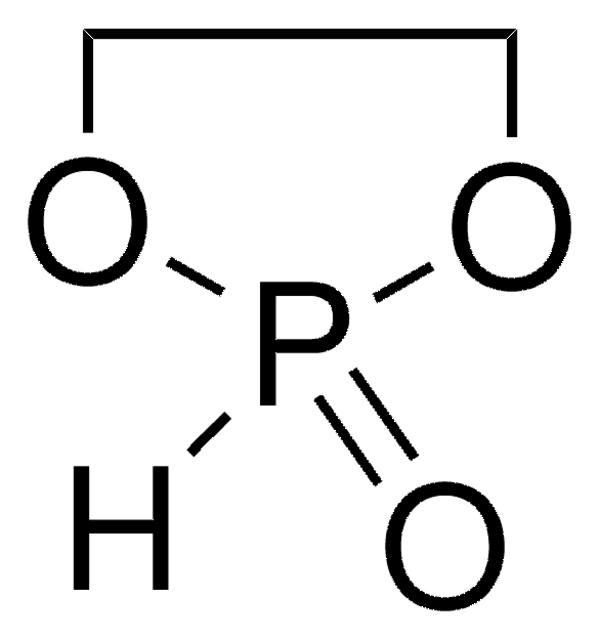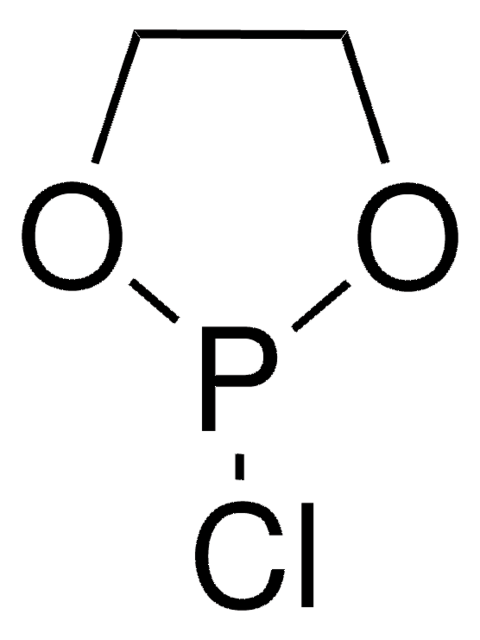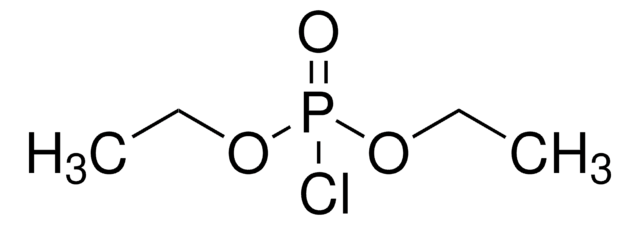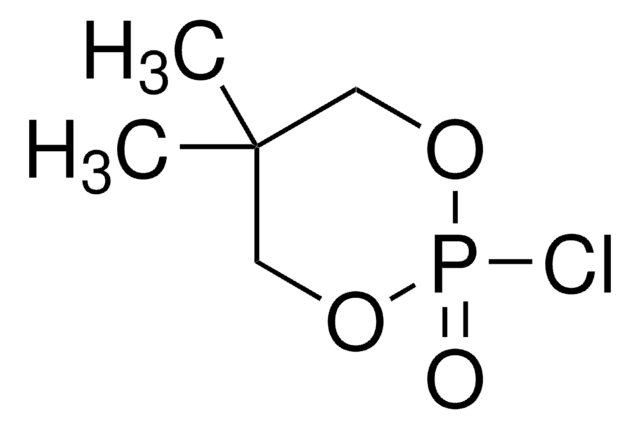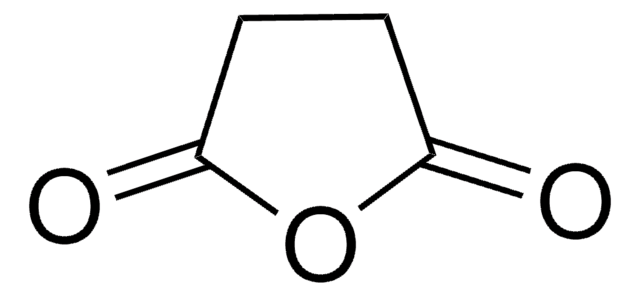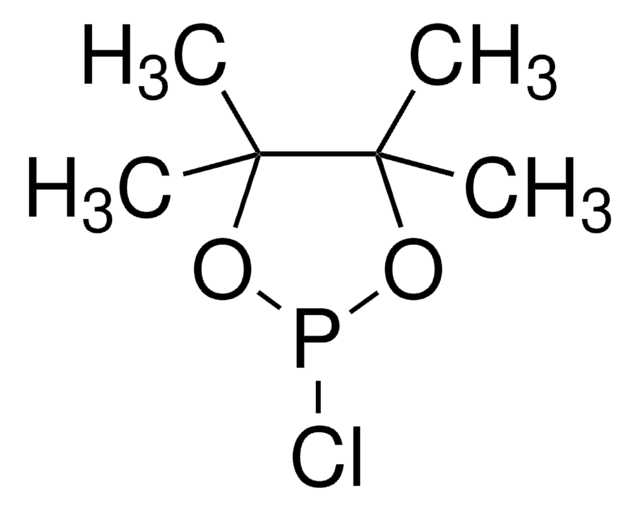377953
2-Chloro-1,3,2-dioxaphospholane 2-oxide
Synonyme(s) :
2-Chloro-2-oxo-1,3,2-dioxaphospholane, Ethylene glycol chlorophosphate
About This Item
Produits recommandés
Forme
liquid
Impuretés
<10% 2-Chloro-1,3,2-dioxaphospholane
Indice de réfraction
n20/D 1.45 (lit.)
pb
89-91 °C/0.8 mmHg (lit.)
Pf
12-14 °C (neat) (lit.)
Densité
1.55 g/mL at 25 °C (lit.)
Température de stockage
−20°C
Chaîne SMILES
ClP1(=O)OCCO1
InChI
1S/C2H4ClO3P/c3-7(4)5-1-2-6-7/h1-2H2
Clé InChI
SBMUNILHNJLMBF-UHFFFAOYSA-N
Catégories apparentées
Description générale
2-Chloro-1,3,2-dioxaphospholane 2-oxide is used in esterification reactions for cyclic phosphate synthesis, also reacts with phenyl grignard reagents.
Application
- 2-methacryloyloxyethylphosphorylcholine
- miltefosine (hexadecylphosphocholine, MT) analogs
- phosphoric acid 2-trimethylamino-ethyl ester undec-10-enyl ester
- uridine nucleolipid, (2′,3′-O-16-hentriacontanyliden-uridine-5′-phosphocholine, PUPC)
- adenosine nucleoamphiphile, (2′,3′-O-16-hentriacontanyliden-adenosine-5′-phosphocholine, PAPC)
- structurally related phospholipids which are either conformationally restricted or flexible
- phosphatidylcholines
- Synthesis of amino-functionalized hybrid hydrocarbon/fluorocarbon double-chain phospholipid
- Synthesis of UV-polymerizable lipids via Chabrier reaction
- Syntheses of block copolymers of poly(aliphatic ester) with clickable polyphosphoester
- Imprinting molecular recognition sites on multiwalled carbon nanotubes surface for electrochemical detection of insulin in real samples
- Synthesis of a zwitterionic silane
- Synthesis of a core-shell-corona micelle stabilized by reversible cross-linkage for intracellular drug delivery
Mention d'avertissement
Danger
Mentions de danger
Classification des risques
Eye Dam. 1 - Skin Corr. 1B
Risques supp
Code de la classe de stockage
8A - Combustible corrosive hazardous materials
Classe de danger pour l'eau (WGK)
WGK 3
Point d'éclair (°F)
>235.4 °F - closed cup
Point d'éclair (°C)
> 113 °C - closed cup
Équipement de protection individuelle
Faceshields, Gloves, Goggles, type ABEK (EN14387) respirator filter
Faites votre choix parmi les versions les plus récentes :
Déjà en possession de ce produit ?
Retrouvez la documentation relative aux produits que vous avez récemment achetés dans la Bibliothèque de documents.
Notre équipe de scientifiques dispose d'une expérience dans tous les secteurs de la recherche, notamment en sciences de la vie, science des matériaux, synthèse chimique, chromatographie, analyse et dans de nombreux autres domaines..
Contacter notre Service technique